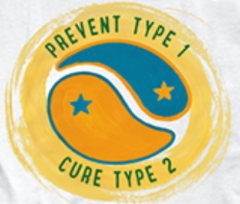Back in 1927, an American physician named Shirley Sweeney recruited some healthy male medical students for a study of how diet affects blood sugar control. That study showed that you could make healthy young men seem diabetic by feeding them too much fat or too much protein or nothing at all for only two days.
Sweeney divided his volunteers into four groups. He asked the members of each group to eat a particular test diet for two days. One group ate mainly carbohydrates (starch and sugar). Another ate mainly protein. A third group ate mainly fats. The fourth group fasted for two days. On the morning of the third day, before the subjects had eaten or drunk anything else, they had a glucose tolerance test. They drank a beverage with a known amount of the sugar called glucose. Then, their blood sugar (blood glucose) levels were measured over the following few hours.
During the glucose tolerance test, the men who had been eating nothing but carbohydrates for two days had remarkably stable blood sugar levels. But the other men’s blood sugar levels spiked to abnormally high levels. The men who had been eating nothing but fat got results that suggested severe diabetes. Remember, these were healthy young men who had been eating an abnormal diet for only two days.
From these results, Sweeney concluded that a high-carbohydrate diet helps to improve the body’s ability to tolerate carbohydrates. In contrast, high-protein diets, high-fat diets, and fasting undermine the body’s ability to control blood sugar. In a follow-up article, Sweeney suggested that some patients might have abnormal glucose tolerance test results because of the diet that their doctors had been urging them to follow, rather than because of some underlying medical problem.
Sweeney was not the only researcher to show that high-fat diets cause problems with blood sugar control. In the 1930s, a British physician named Sir Harold Percival Himsworth did similar studies and got similar results.
Starting in the late 1930s, a German émigré physician named Walter Kempner started applying these lessons to the treatment of patients at Duke University. Kempner started off by trying to find a dietary solution to severely high blood pressure. Back then, no effective drugs were available to reduce blood pressure. Kempner reasoned that since heart and kidney disease were rare in societies that ate a rice-based diet, his patients should eat a rice-based diet.
Because his patients had kidney problems and atherosclerosis, Kempner designed a diet to be as low as possible in protein and fat. So he told his patients to eat nothing but rice, fruit, and fruit juice. If they lost too much weight on that low-fat diet, they were told to add some pure sugar. This diet produced dramatic improvements in patients with heart and kidney disease. It also did wonders for patients with diabetes.
Patients with what is now called type 2 diabetes, which is a complication of being overweight, lost weight and became undiabetic. Patients with type 1 diabetes, which results when the immune system destroys the pancreas’s ability to make insulin, had much better control of blood sugar levels and could get by on much smaller insulin doses. Even their eyes were healthier. (Diabetes is a major cause of blindness.)
The fact that high-carb diets are good for diabetics has been known since the 1920s. Nevertheless, many doctors in the United States are still urging their overweight and diabetic patients to avoid eating carbs. Unfortunately, a low-carb diet can make even a healthy young person look diabetic within a matter of days. Fortunately, a high-carb diet can cure the most common form of diabetes and can improve the health of people with the incurable form of diabetes.
Note: This article was originally posted on my Where Do Gorillas Get Their Protein? blog (www.gorillaprotein.com).
 As I explain in my book Thin Diabetes, Fat Diabetes: Prevent Type 1, Cure Type 2, There are two main type of sugar diabetes (diabetes mellitus). If you have thin diabetes (type 1 diabetes mellitus), your pancreas cannot make enough insulin to keep you alive. If you have fat diabetes (type 2 diabetes mellitus), your body is resisting the effects of insulin, to keep you from storing more fat in your fat cells. You can have both problems at once. In other words, even people with insulin shortage can have some degree of insulin resistance.
As I explain in my book Thin Diabetes, Fat Diabetes: Prevent Type 1, Cure Type 2, There are two main type of sugar diabetes (diabetes mellitus). If you have thin diabetes (type 1 diabetes mellitus), your pancreas cannot make enough insulin to keep you alive. If you have fat diabetes (type 2 diabetes mellitus), your body is resisting the effects of insulin, to keep you from storing more fat in your fat cells. You can have both problems at once. In other words, even people with insulin shortage can have some degree of insulin resistance.

